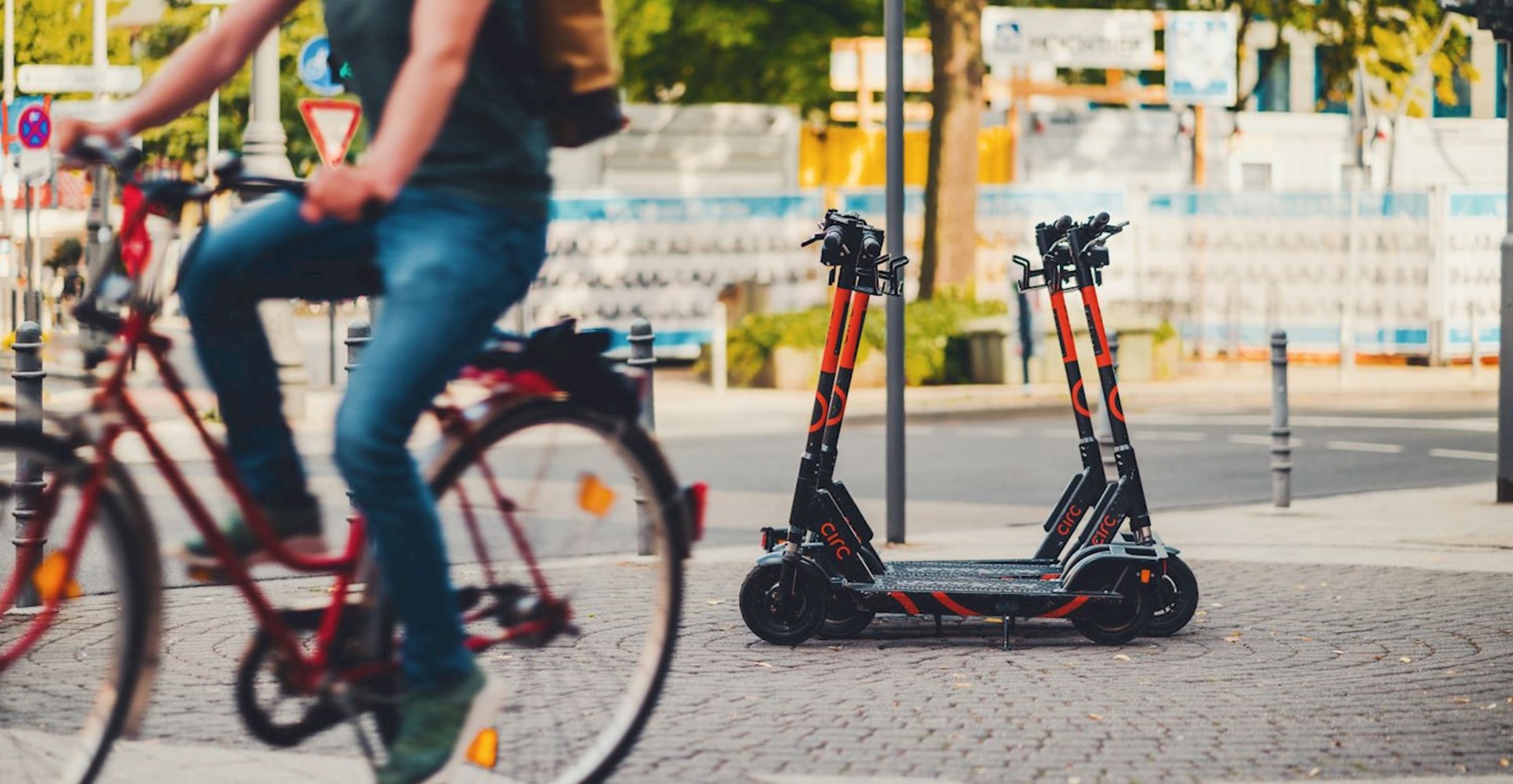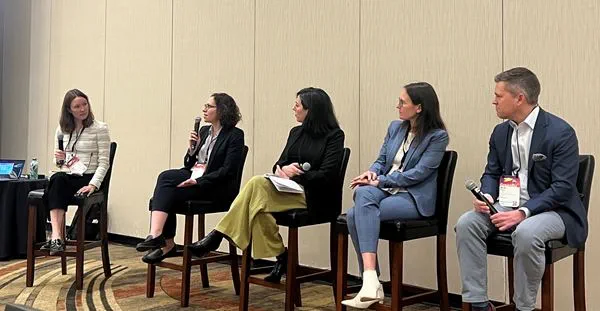Mobility as a Service (MaaS) has been subject to much hype in recent years, but problems around data sharing and unsuccessful adoption in some cities have led to doubt around its potential. But COVID-19 has changed the landscape, with increased public willingness to share data for safety and reliability, as well as increased enthusiasm for 'micro mobility' options, such as electric and shared bikes and scooters. Does this mean the time has come for Maas to fulfil its potential as a more efficient and sustainable transport solution?
COVID-19 has given real momentum to rethinking mobility in our cities, and embracing new mobility solutions – like MaaS - can help when it comes to knitting communities together and supporting long term recovery. Ensuring that our cities remain liveable and sustainable has become one of the defining challenges of our times, and a well-functioning transport sector is key. MaaS offers solutions, but future success will depend on the better integration of other existing forms of transport.
Why is MaaS so hard to achieve?
MaaS brings together multiple modes of travel, combining options for different transport providers into a single service. From e-scooters to bikes, car and ride sharing to public transport, MaaS allows access to all modes of transport via a single payment platform.
Done right, MaaS will have an important role to play in the smart cities of the future. It can contribute to the reduction of both CO2 emissions and pollution, while improving overall transport efficiency and reducing reliance on private cars.
However, despite global demographic trends in favour of a more encompassing solution to transport, many experts have been sceptical of the promises of MaaS, with observations that momentum was stalling. This has many causes and raises many questions.
With MaaS reliant on so many different stakeholders coming together, how do we ensure the benefits are distributed fairly? How do we solve the challenges around the business model, such as whether there is sufficient money in transportation to allow MaaS providers to make their cut too? And as more organisations enter the field, how are we approaching regulation? Would people even use the technology if it was more broadly available?
In a few instances, companies have found limited traction among citizens when rolling out their services. In Flanders, Belgium, there was usage of just 3% for the purchase of transit tickets, despite significant integration with the existing ecosystem. European countries in particular have seen a strong backlash against overly aggressive corporate use of personal data. The introduction of the General Data Protection Regulation (GDPR) in 2018 put up further roadblocks to broad adoption.
Public transport and social distancing
Against this backdrop, the global pandemic of 2020 marked a dramatic change of behaviour and shifting of priorities. Many businesses have embraced working from home; while even during slow re-openings we have been able to witness the disruptive short-term impact on public transport, with an increasing number of people resorting to private vehicle use.
In just a short period, use of public transport has fallen by unprecedented levels of between 80% and 90% across all major cities – driven by government lockdowns and the fear of contracting and spreading the virus. Shared forms of mobility have become less attractive, and people are looking for alternatives that combine efficient transport with the need for safety.
'Micro mobility' and data sharing
As a consequence, we have seen a huge increase in 'micro mobility' - electric and shared bikes and scooters - due to ease of use and compatibility with social distancing guidelines. Scooters and bikes are especially competitive within the short distances associated with inner-city travel, allowing citizens to avoid road congestion as well as crowded public transport. Local governments have reacted quickly, increasing the availability of cycle lanes and making certain parts of a city inaccessible by car.
While this appears to offer some long-term solutions to the problems of air pollution and congestion, the question remains; how sustainable are these new patterns of transport? For example, as we head into winter, colder weather may push people away from micro mobility usage.
At the same time, COVID-19 has shown the need and ability to better harness data. Contact tracing apps around the world allow governments to combat the virus more efficiently, with citizens often opting in voluntarily and sharing private data. It is possible that this newfound positive predisposition towards data sharing will extend to new services that ensure the increased safety of our transportation system, while also making it more efficient and reducing emissions.
MaaS as a solution
What if, instead of being run separately, we could integrate bus and train schedules; taxi, bike and scooter availability; and car sharing usage into a single platform?
This could allow users to optimise their route along many dimensions, including speed, cost and safety, while ensuring that different modes of transport are being used more efficiently. In this new model, commuter routes would no longer be blocked in one direction in the morning and the opposite in the evening; some public bike stands would no longer lie empty while others are packed; and some trains would no longer be too full while others lie empty.
The integration of existing and new transport data into a single platform could offer additional benefits. When looking for a new home, families would be able to accurately assess the impact on their commutes. Employees and companies could use real-time decision-making to assess if it made sense to meet in the office or work remotely and, ultimately, the transport system could more readily adapt to unforeseen changes - such as daily pollution levels, outages on certain parts of the network or even the increased risks of a new virus.
Since the onset of COVID-19, we have witnessed a more systematic effort by companies and governments to more fully integrate existing user data, with the understanding that this may not only be necessary, but beneficial. Against this backdrop, MaaS may finally be able to act as a technology-based, data rich platform that links transport users directly with operators.
Autonomous vehicles and the way forward
Looking ahead, MaaS can contribute to a more resilient transport network by providing more choice in mobility options and ease of use. It will also help to rebuild trust in the safety of the transportation network by providing real-time, multimodal information.
However, there are regional and practical differences. For example, underground trains and shared bicycles are not available everywhere, and commuting by bike is not feasible in many parts of the world and for many jobs. It means that MaaS solutions will be rolled out first in cities that already have data rich platforms and multiple transport options available. The lessons learned along the way will then inform infrastructure decisions to ensure other regions will also be able to benefit.
A final step towards a more general adoption of MaaS is likely to accompany the wider introduction of autonomous vehicles. Investment in the technology has progressed significantly, and now is the time to think about eventual integration with other mobility platforms. In particular, the option of continuous use of vehicles with the ability to efficiently match supply and demand will allow cities to quickly react to changes in the environment - whether due to system outages or the emergence of a novel virus - leading to increased safety and trust amongst citizens.
Self-driving cars, delivery robots and shuttles are already driving out of labs and onto streets to help deliver food, goods and medical supplies. Chinese company Baidu, one of the leaders in autonomous vehicle technology, is using its driverless vehicles for frontline anti-epidemic work such as cleaning, disinfecting, logistics and transportation. In the US, for the first time, autonomous vehicles are being used to transport medical supplies and COVID-19 tests at the Mayo Clinic in Florida.
Ultimately, MaaS will not only be a solution for the transportation of people, but also for goods, as governments try to simultaneously solve the strains put on their infrastructure by global population growth, urbanisation and the continued surge in e-commerce.
To read more recommendations for embedding sustainable, long-lasting change in our towns and cities, and for the people who live within them, download our latest Shared Recovery report here.








